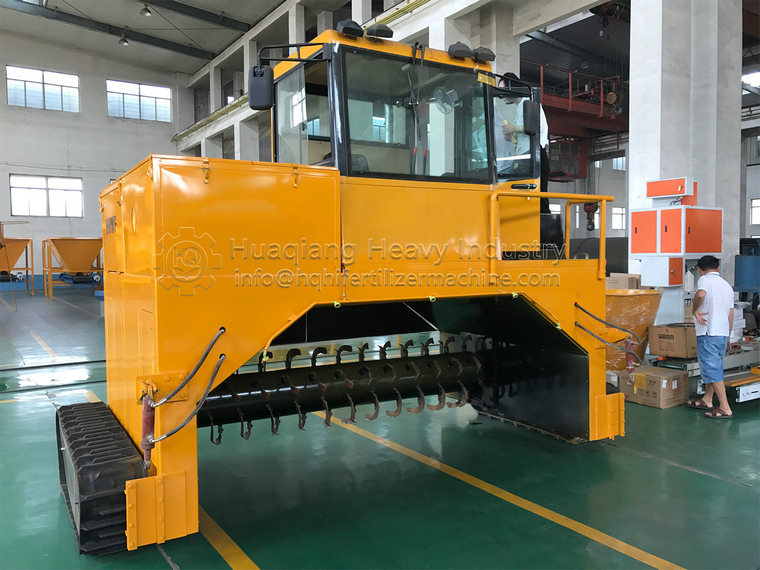The organic fertilizer turning machine usually follows the following steps in the process of processing waste and turning it into fertilizer:
Material preparation:
Firstly, collect organic waste that needs to be processed, such as livestock manure, crop straw, food processing waste, etc.
Adjusting the moisture content of materials generally requires a moisture content between 40% and 60% to promote microbial activity and fermentation efficiency.
Additional materials such as dry straw, sawdust, rice husk, etc. can be added to adjust the carbon nitrogen ratio of the materials, improve ventilation, and accelerate the fermentation process.
Preliminary composting:
Stack the prepared materials into a certain shape, usually in the form of a bar or cone, to facilitate the operation of the flipping machine.
Starting the natural fermentation process, microorganisms will decompose organic matter, generate heat, and increase the temperature of compost.
Pile flipping operation:
The use of an organic fertilizer turning machine to turn compost is crucial for promoting oxygen supply, uniform temperature distribution, material mixing, and microbial activity.
The compost turning machine uses its unique bucket or blade to lift the compost from the bottom, flip the internal materials to the surface, and at the same time, flip the surface materials into the interior to promote uniform fermentation.
The flipping process should be carried out regularly according to the temperature, humidity, and fermentation status of the materials, usually every 3-7 days until fermentation is complete.
Fermentation process control:
Monitor the temperature of compost. During the early stages of fermentation, the temperature will rapidly rise to 50-65 ° C, which helps to kill pathogens and weed seeds.
Control the moisture and ventilation of compost to maintain suitable fermentation conditions and avoid the formation of anaerobic environments.
Adjust the shape and size of compost to meet the fermentation needs of different stages.
Fermentation completion and post-treatment:
When the temperature of compost begins to stabilize or decrease, and the material becomes dry and loose, it indicates that the fermentation process is basically completed.
The fermented organic fertilizer needs to be further screened to remove large impurities, and then dried and stored as necessary to prevent secondary fermentation or mold growth.
According to the needs, fertilizers can be further processed, such as granulation and packaging, to enhance their market value and ease of use.
Through the treatment of organic fertilizer turning machine, waste is effectively converted into organic fertilizers rich in organic matter and nutrients, which not only realizes the resource utilization of waste, but also promotes soil health and sustainable development of agriculture. Throughout the entire process, scientific management and operation are crucial for ensuring the quality and fermentation efficiency of fertilizers.